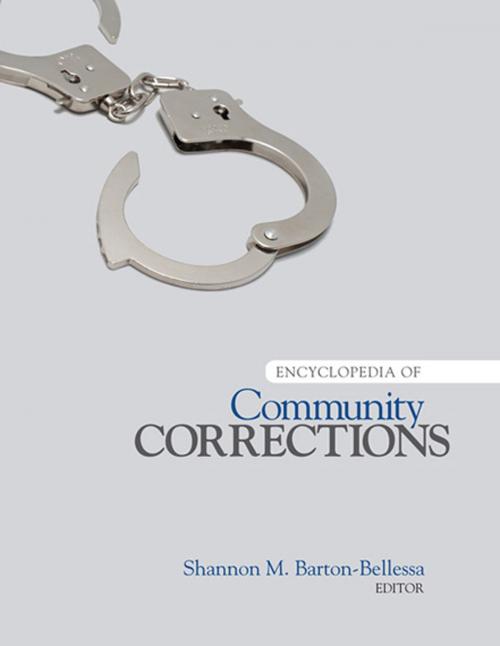Encyclopedia of Community Corrections
Nonfiction, Social & Cultural Studies, Social Science, Crimes & Criminals, Penology| Author: | ISBN: | 9781506354897 | |
| Publisher: | SAGE Publications | Publication: | April 17, 2012 |
| Imprint: | SAGE Publications, Inc | Language: | English |
| Author: | |
| ISBN: | 9781506354897 |
| Publisher: | SAGE Publications |
| Publication: | April 17, 2012 |
| Imprint: | SAGE Publications, Inc |
| Language: | English |
In response to recognition in the late 1960s and early 1970s that traditional incarceration was not working, alternatives to standard prison settings were sought and developed. One of those alternatives—community-based corrections—had been conceived in the 1950s as a system that might prove more progressive, humane, and effective, particularly with people who had committed less serious criminal offenses and for whom incarceration, with constant exposure to serious offenders and career criminals, might prove more damaging than rehabilitative. The alternative of community corrections has evolved to become a substantial part of the criminal justice and correctional system, spurred in recent years not so much by a progressive, humane philosophy as by dramatically increasing prison populations, court orders to "fix" overextended prison settings, and an economic search for cost savings. Although community correction programs have been in place for some 40 years now, to date no comprehensive reference resource has tackled this topic. Accessible and jargon-free and available in both print and electronic formats, the one-volume Encyclopedia of Community Corrections will explore all aspects of community corrections, from its philosophical foundation to its current inception.
Features & Benefits:
- 150 signed entries (each with Cross References and Further Readings) are organized in A-to-Z fashion to give students easy access to the full range of topics in community corrections.
- A thematic Reader's Guide in the front matter groups entries by broad topical or thematic areas to make it easy for users to find related entries at a glance.
- In the electronic version, the Reader's Guide combines with a detailed Index and the Cross References to provide users with convenient search-and-browse capacities.
- A Chronology in the back matter helps students put individual events into broader historical context.
- A Glossary provides students with concise definitions to key terms in the field.
- A Resource Guide to classic books, journals, and web sites (along with the Further Readings accompanying each entry) guides students to further resources in their research journeys.
- An Appendix offers statistics from the Bureau of Justice.
In response to recognition in the late 1960s and early 1970s that traditional incarceration was not working, alternatives to standard prison settings were sought and developed. One of those alternatives—community-based corrections—had been conceived in the 1950s as a system that might prove more progressive, humane, and effective, particularly with people who had committed less serious criminal offenses and for whom incarceration, with constant exposure to serious offenders and career criminals, might prove more damaging than rehabilitative. The alternative of community corrections has evolved to become a substantial part of the criminal justice and correctional system, spurred in recent years not so much by a progressive, humane philosophy as by dramatically increasing prison populations, court orders to "fix" overextended prison settings, and an economic search for cost savings. Although community correction programs have been in place for some 40 years now, to date no comprehensive reference resource has tackled this topic. Accessible and jargon-free and available in both print and electronic formats, the one-volume Encyclopedia of Community Corrections will explore all aspects of community corrections, from its philosophical foundation to its current inception.
Features & Benefits:
- 150 signed entries (each with Cross References and Further Readings) are organized in A-to-Z fashion to give students easy access to the full range of topics in community corrections.
- A thematic Reader's Guide in the front matter groups entries by broad topical or thematic areas to make it easy for users to find related entries at a glance.
- In the electronic version, the Reader's Guide combines with a detailed Index and the Cross References to provide users with convenient search-and-browse capacities.
- A Chronology in the back matter helps students put individual events into broader historical context.
- A Glossary provides students with concise definitions to key terms in the field.
- A Resource Guide to classic books, journals, and web sites (along with the Further Readings accompanying each entry) guides students to further resources in their research journeys.
- An Appendix offers statistics from the Bureau of Justice.















